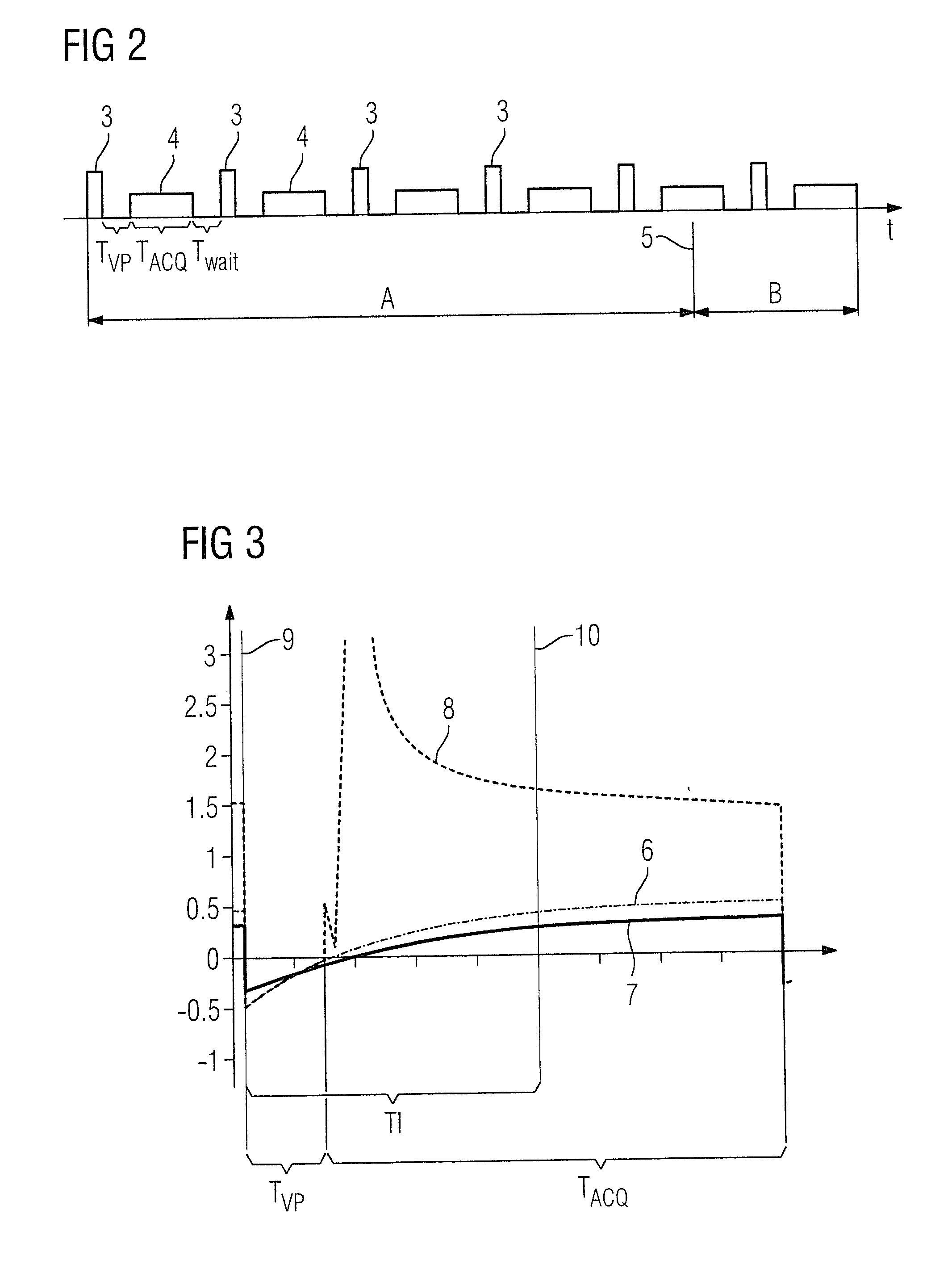Method and magnetic resonance apparatus for image acquisition
a magnetic resonance apparatus and image acquisition technology, applied in the field of image acquisition, can solve problems such as measurement errors, and achieve the effect of improving contrast and signal-to-noise ratio
- Summary
- Abstract
- Description
- Claims
- Application Information
AI Technical Summary
Benefits of technology
Problems solved by technology
Method used
Image
Examples
Embodiment Construction
[0032]FIG. 1 shows the workflow of a PETRA sequence as a magnetic resonance sequence, as is known in the prior art (for example DE 10 2010 041 446 A1), and that can be used for image acquisition in a magnetic resonance device. The first line in FIG. 1 shows the radiated radio-frequency excitation pulses 1; the second line shows the associated readout time periods 2. The excitation pulses 1 are respectively repeated at an interval of a repetition time TR which remains constant across the entire sequence. In the present exemplary embodiment, two phase coding gradients are switched, such that a coding in the third direction (the slice direction, here the z-direction) is foregone (Gz=0).
[0033]Clearly, if scanning takes place both in a first measurement segment A in which a first region of k-space is scanned radially and in a second measurement segment B in which the second region of k-space (that is not included by the first region) which includes the center of k-space, the gradients ar...
PUM
 Login to View More
Login to View More Abstract
Description
Claims
Application Information
 Login to View More
Login to View More - R&D
- Intellectual Property
- Life Sciences
- Materials
- Tech Scout
- Unparalleled Data Quality
- Higher Quality Content
- 60% Fewer Hallucinations
Browse by: Latest US Patents, China's latest patents, Technical Efficacy Thesaurus, Application Domain, Technology Topic, Popular Technical Reports.
© 2025 PatSnap. All rights reserved.Legal|Privacy policy|Modern Slavery Act Transparency Statement|Sitemap|About US| Contact US: help@patsnap.com



